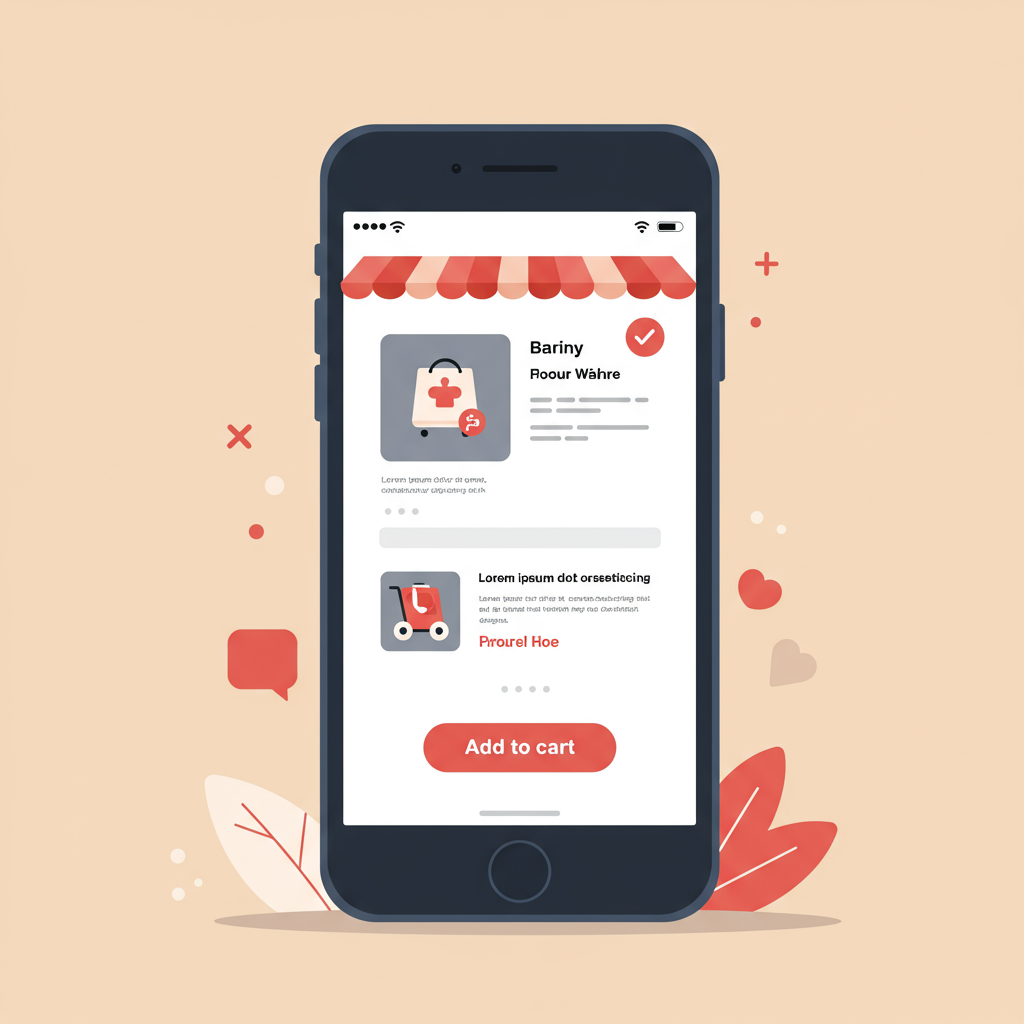Unlock higher conversions and happier customers by prioritizing the mobile experience on your Shopify store.
Hello fellow Shopify merchants! Today, I want to talk about something incredibly crucial for your online store’s success: designing for mobile first.
In my experience, many of us still think about desktop design as the primary focus, then adapt for mobile. But the truth is, that approach is outdated and can cost you sales.
The vast majority of online traffic, especially in e-commerce, now comes from mobile devices. Your customers are browsing, discovering, and buying on their phones.
If your Shopify store isn’t optimized for these users from the ground up, you’re not just losing sales; you’re creating a frustrating experience that drives customers away.
A mobile-first approach means you design the smallest screen experience first, then progressively enhance it for larger screens. It’s about prioritizing what truly matters.
When I started implementing this mindset, I realized it forces you to strip away clutter and focus on what’s absolutely essential for the customer journey.
The first principle I always consider is content prioritization. What’s the absolute most important information a mobile user needs to see immediately?
This often means concise product descriptions, clear calls to action, and high-quality images that load quickly. Every pixel counts on a small screen, so make them count.
Simplicity and minimalism are key. A cluttered mobile interface is a nightmare. Think clean layouts, ample white space, and intuitive navigation that’s easy to tap.
I’ve found that reducing the number of steps in any process, from browsing to adding to cart to checkout, significantly improves conversion rates on mobile devices.
Speed and performance are non-negotiable. Mobile users are often on the go, sometimes with less stable connections. Slow loading times are a death knell for mobile sales.
This means optimizing all your images, leveraging browser caching, and choosing a Shopify theme that is inherently fast and well-coded from the start.
Touch-friendly elements are another critical aspect. Buttons and links need to be large enough to be easily tapped without accidental misclicks or frustration.
I always ensure my call-to-action buttons, like ‘Add to Cart’ or ‘Buy Now,’ are prominent, easy to interact with, and clearly visible on a smartphone screen.
Accessibility is also paramount. Consider users with varying abilities. Is your text readable? Are your color contrasts sufficient? Can it be navigated easily with a screen reader?
Now, let’s talk about how this translates specifically to your Shopify store. The foundation of your mobile-first design is undoubtedly your chosen theme.
Always choose a Shopify theme that is explicitly advertised as ‘responsive’ or ‘mobile-first.’ Most modern Shopify themes are, but some are far better optimized than others.
Test your chosen theme’s responsiveness thoroughly before committing. Use Shopify’s theme customizer to preview on different device types, and check it on actual phones.
Image optimization is probably the single biggest impact you can make on mobile speed. Large, unoptimized images will cripple your site’s performance and user experience.
I use apps or built-in Shopify features to compress images without sacrificing quality. Exploring modern formats like WebP can also provide significant performance boosts.
Streamlining navigation is crucial. Hamburger menus are common on mobile, but ensure your main categories are easily accessible and logically organized within it.
Avoid deep, complex navigation structures that require too many taps. Think about how a user would naturally flow through your store on a phone, aiming for minimal clicks.
Product pages need special attention. Your product photos should be high-resolution but optimized for fast loading. Consider a swipeable gallery for easy viewing.
Product descriptions should be scannable. Use bullet points and short paragraphs. Get to the point quickly, highlighting key benefits and essential information.
The ‘Add to Cart’ button should be immediately visible and ideally sticky as the user scrolls, to ensure it’s always within easy reach and encourages action.
The checkout process is where many mobile sales are lost due to friction. Simplify it as much as humanly possible to reduce abandonment rates.
Shopify’s native checkout is generally well-optimized, but ensure you’re not adding unnecessary fields or steps through third-party apps that could complicate it.
Consider offering express checkout options like Shop Pay, Apple Pay, or Google Pay. These significantly reduce friction and speed up the process for mobile users.
I also recommend regularly testing your store on various mobile devices – not just emulators, but actual phones and tablets across different operating systems.
Ask friends or family to navigate your store on their phones and give you honest feedback. Sometimes, fresh eyes catch usability issues you might have overlooked.
Monitor your mobile analytics in Shopify and Google Analytics. Look at bounce rates, conversion rates, and time on site specifically for mobile users.
These metrics will tell you exactly where your mobile experience might be falling short and where you need to make targeted improvements for better performance.
What do you think about these mobile-first strategies? Have you implemented any of them, or do you have other tips to share that have worked well for your store?
Remember, designing for mobile first isn’t just a trend; it’s the standard for modern e-commerce. It’s about respecting your customers’ time and their preferred device.
By prioritizing the mobile experience, you’re not just making your store more accessible; you’re building a more efficient, user-friendly, and ultimately, more profitable business.
So, take the leap. Start thinking mobile-first today, and watch your Shopify store thrive in the palm of your customers’ hands, leading to increased satisfaction and sales.






